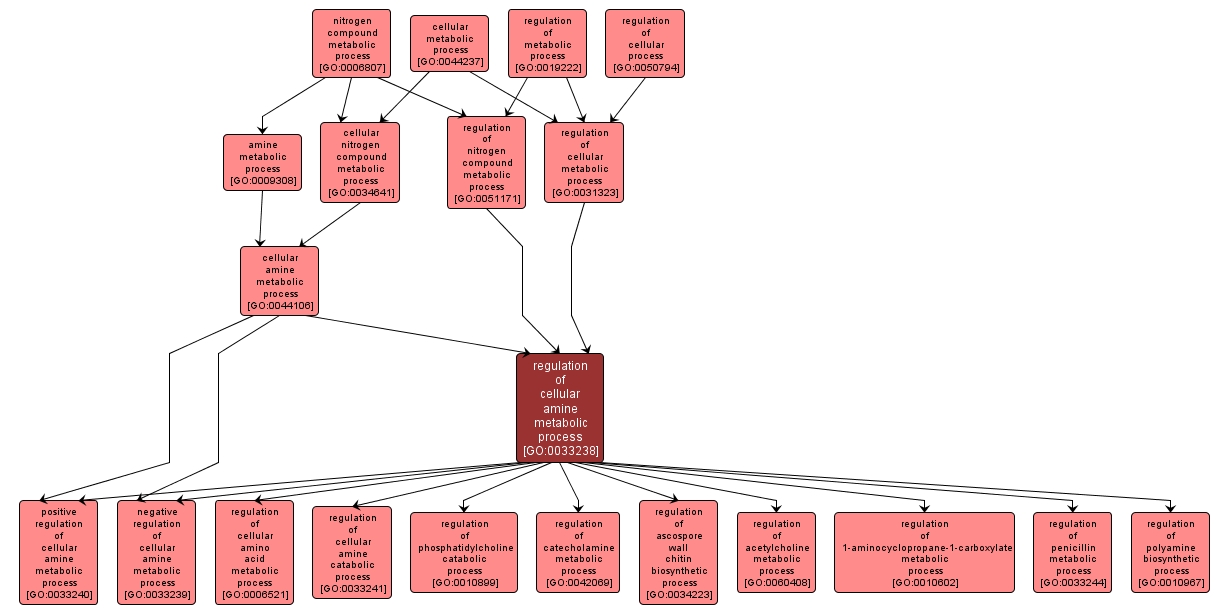GO TERM SUMMARY
|
| Name: |
regulation of cellular amine metabolic process |
| Acc: |
GO:0033238 |
| Aspect: |
Biological Process |
| Desc: |
Any process that modulates the frequency, rate or extent of the chemical reactions and pathways by which individual cells transform amines. |
Synonyms:
- regulation of amine metabolism
|
|

|
INTERACTIVE GO GRAPH
|














